

Matt Campbell
2026 Hyundai Tucson Hybrid review
6 Hours Ago
The sixth instalment of Honda's popular mid-size SUV is a welcome return to form that could really take it to the segment leaders.
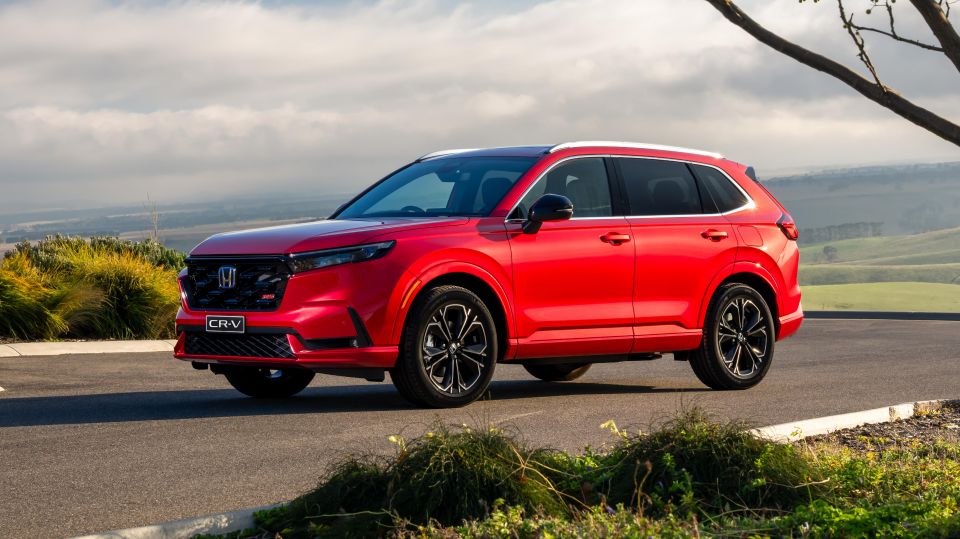
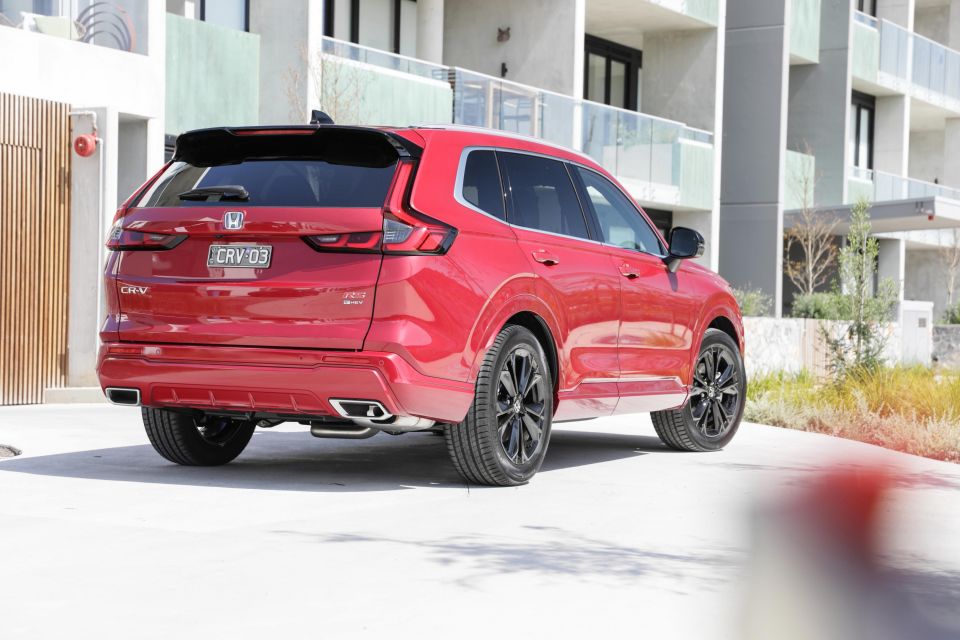

Quickly see how this car stacks up against its competition. Select any benchmark to see more details.
Where expert car reviews meet expert car buying – CarExpert gives you trusted advice, personalised service and real savings on your next new car.
The Honda CR-V has long been an SUV staple for families around the world. Some 13.5 million units have been sold globally since the nameplate launched back in 1997.

It’s a popular choice in Australia as well, with Honda telling us a quarter of a million units have been sold here over the nameplate’s lifetime. Two decades on, it’s still the brand’s top-selling model in Australia.
It’s easy to see why the sixth-generation CR-V is such an important car. It’s the brand’s flagship SUV in Australia, competes in our market’s biggest and most competitive new vehicle segment, and it completes a refreshed line-up as part of a new agency-based business strategy.
It’s also the first CR-V to offer a hybrid in Australia, having missed out on the petrol-electric version of the previous model offered in various overseas markets. Given the Toyota RAV4 Hybrid is one of Australia’s most in-demand vehicles, you can see how Honda’s local arm finally got that one over the line.
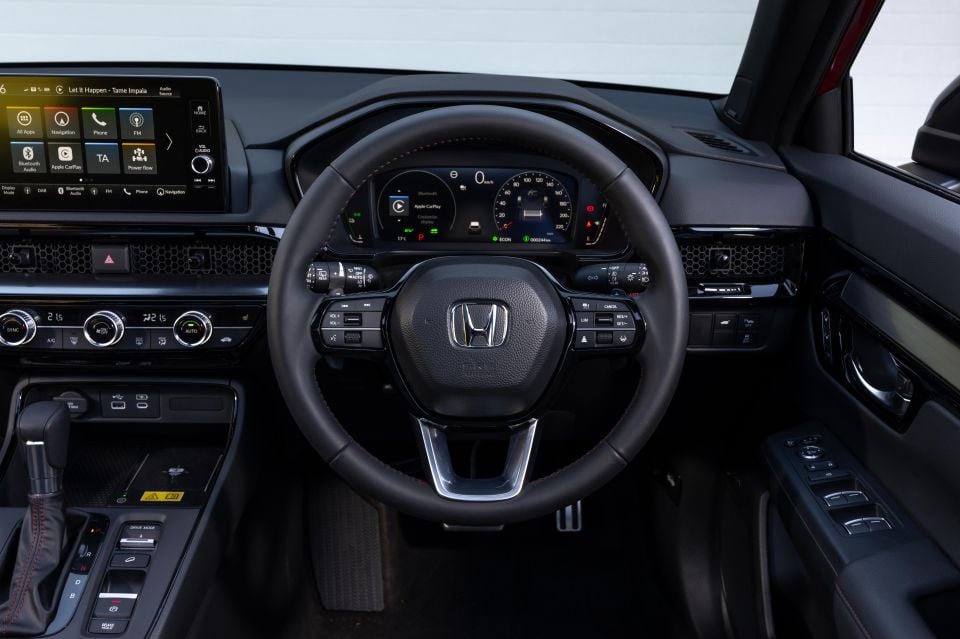
Honda has indicated supply is strong as more stock arrives from overseas, with the CR-V continuing to be sourced from Thailand unlike its Japanese-sourced stablemates. Chances are if you order one today, you could have a car by Christmas or very early in the new year – a much shorter window than some other makes right now.
So can the sixth-generation CR-V put Honda towards the top of the class again?
Pricing is a bit up on the previous-gen range, though there’s a lot more standard equipment.
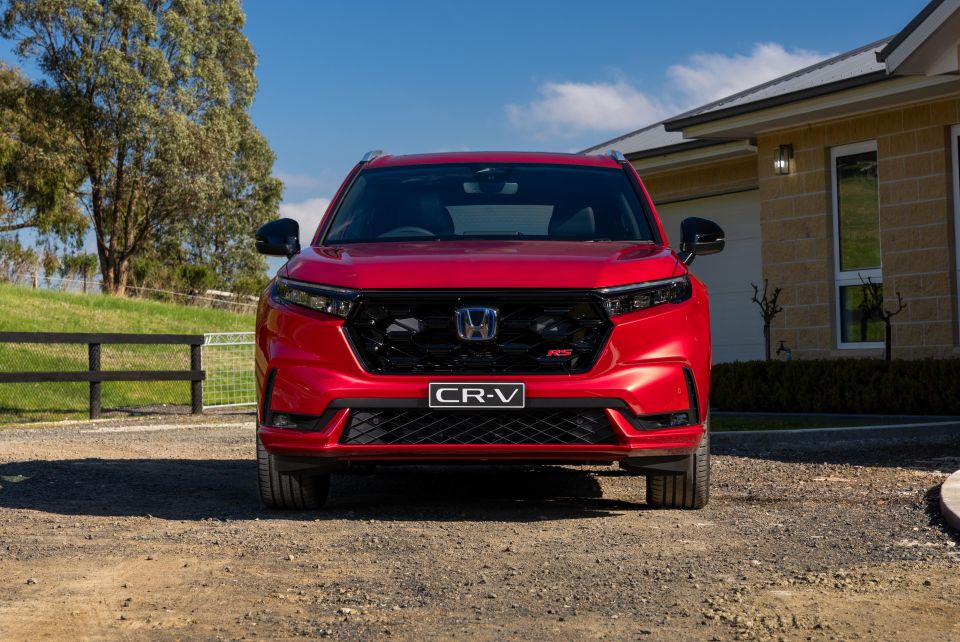
The most affordable variant in the 2024 Honda CR-V range is the VTi X, which opens at $44,500 drive-away. Keep in mind Honda Australia has nationwide fixed pricing.
That’s about $9000 higher than the previous entry point into Honda’s mid-size SUV range, though the old CR-V Vi lacked a turbocharged engine, and did without the Honda Sensing active safety suite now standard across the range. Take into account the new car is larger and offers more standard kit, and you can see where the extra spend is going.
As we’ve seen with other new Honda launches of late, hybrid power is restricted to the flagship variant, meaning you’ll be paying $59,900 drive-away if you want the CR-V e:HEV.
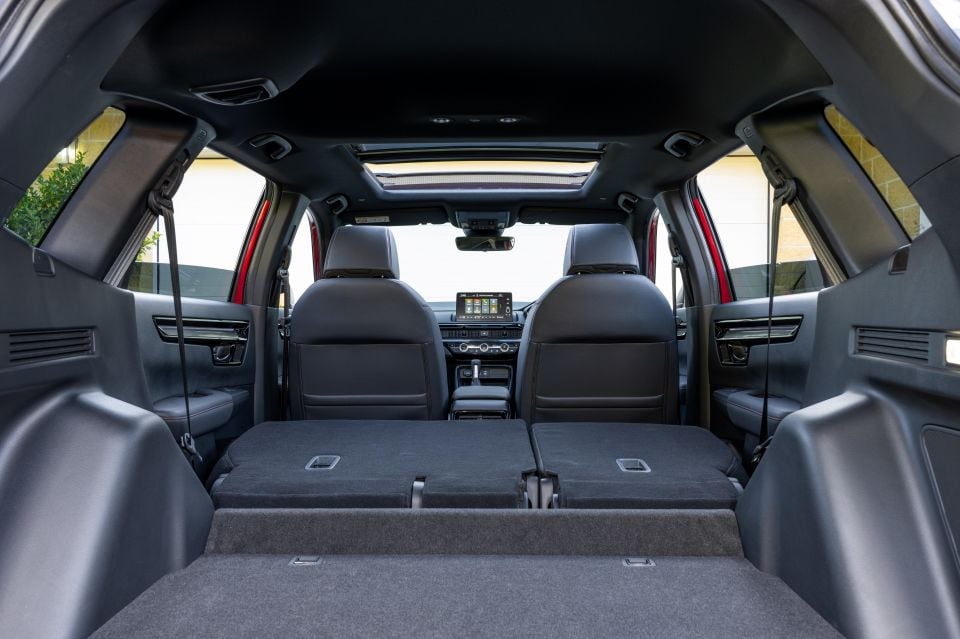
The CR-V also offers a third row of seating as an option, with entry-level X7 and more premium L7 available for $46,800 and $53,000 drive-away respectively. Three petrol AWD variants are offered, the e:HEV hybrid is currently 2WD only.
Relative to the segment, the CR-V isn’t all that expensive despite the price rises. A base Toyota RAV4 GX 2WD will set you back more than $44,000 drive-away in Victoria, while the Nissan X-Trail and Mitsubishi Outlander can be had in their most basic forms for $41,000-$42,000 drive-away.
The CR-V e:HEV RS lines up against the Nissan X-Trail Ti e-Power (from $59,421 D/A in VIC) and Toyota RAV4 Cruiser 2WD Hybrid (from $56,519 in VIC). The most affordable Mitsubishi Outlander Plug-in Hybrid EV kicks off from $62,620 drive-away in Victoria.
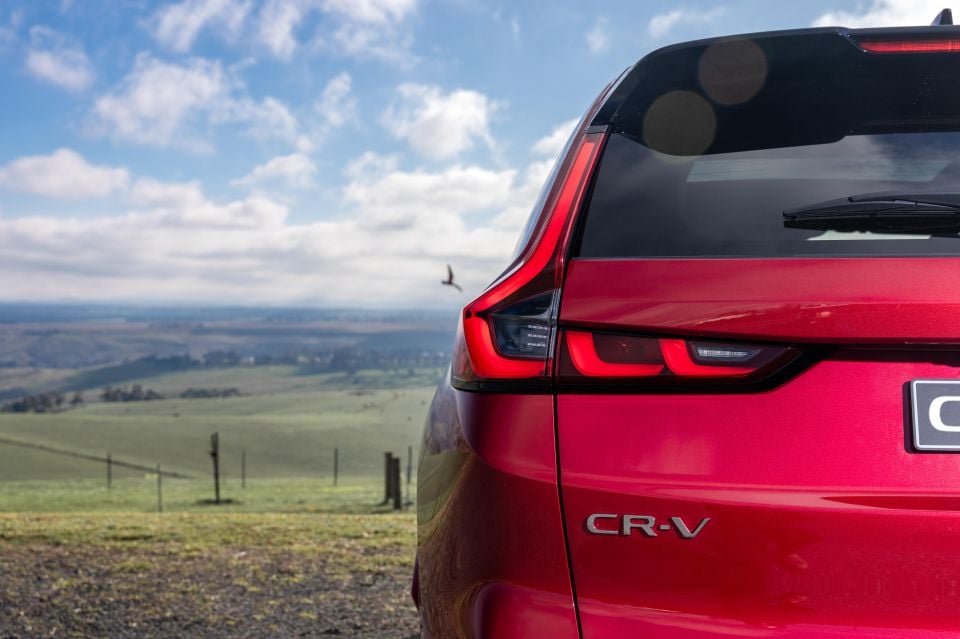
2024 Honda CR-V pricing:
All prices are drive-away
Buy your new car without the stress. It's fast, simple and completely free.

Great service from Travis and team, second time I have used this business would not hesitate to recommend them to anyone
Craig C.
Purchased a Ford Ranger in Sunshine Coast, QLD
CarExpert helped Craig save thousands on his Ford Ranger, now let us save you on your next new car.
Find a dealHonda has a pretty consistent theme with all its interiors these days, which isn’t necessarily a bad thing.
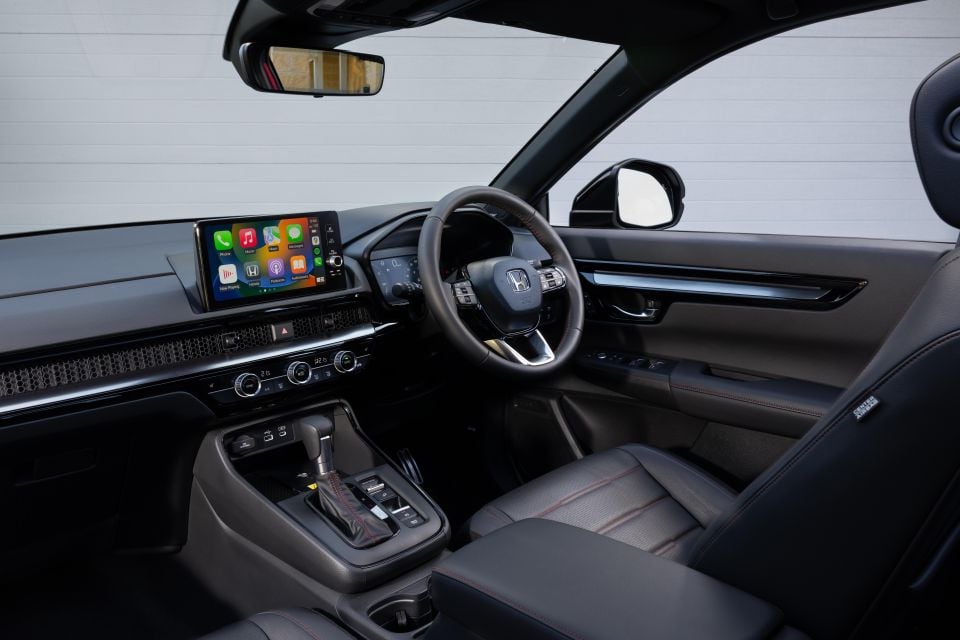
The company points to reliability and quality as hallmarks of the CR-V, and the new model definitely feels more refined than its predecessor.
Gone are the ageing displays running clunky software, replaced with Honda’s latest interface with connected services as standard. There’s a better feeling of solidity compared to the last generation, with tactility of the buttons and switches feeling a step up on before.
Honda Connect is a net-based telematics service which enables a number of connected and remote functions, accessible via the infotainment system as well as a dedicated smartphone app.
A five-year subscription to Honda Connect is included with the purchase of any new CR-V, as well as various other models in the line-up including the Civic e:HEV and Type R, as well as the ZR-V.
Highlights include:
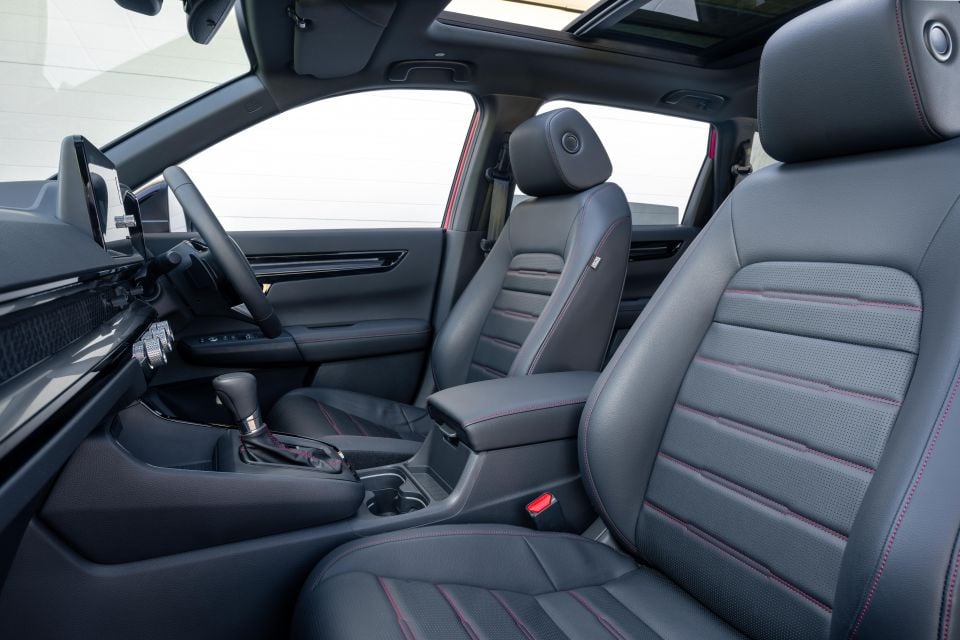

Anyway, back to the CR-V’s cabin. Ahead of the driver is a part-digital instrument cluster in VTi X and L models, with the LX and e:HEV RS upgrading to a 10.25-inch all-digital cluster.
The clusters are familiar from other members of the Honda line-up. I’m a fan of the pared back design and crisp typeface, which have a bit of a European feel.
The all-digital setup gets a fun little live graphic in the centre that has a little virtual CR-V corresponding to indicators and brake lights, and will show you the assistance systems at work when activated.
However, there’s little other configurability other than widgets in the centre of either dial. There’s no Volkswagen-style full map display or other layouts to change things up.
The front seats are really comfy, and the driver gets an eight-way powered seat across the range, meaning it’s pretty easy to find a comfortable perch to spend long stints behind the wheel.
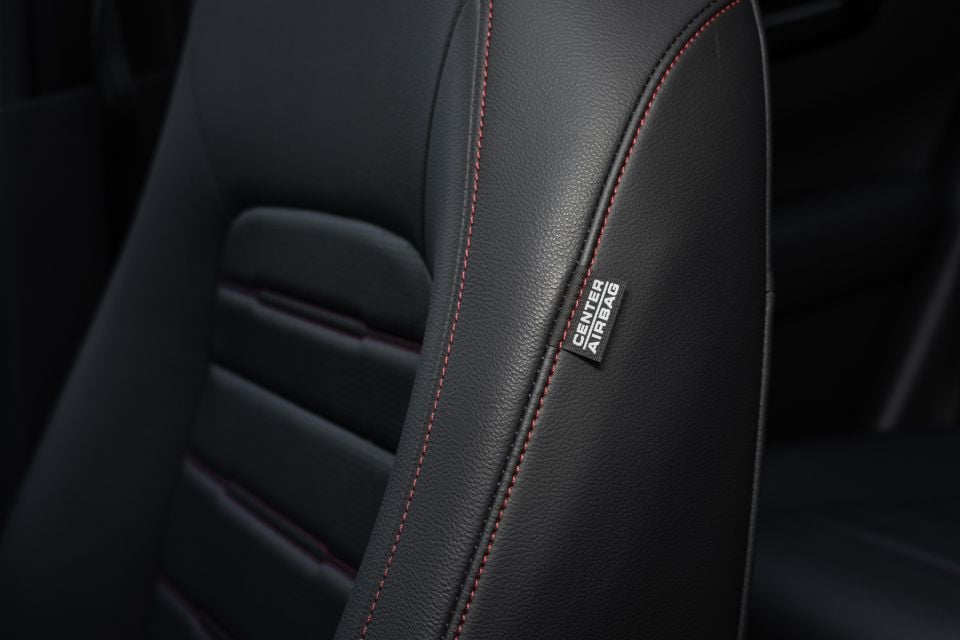
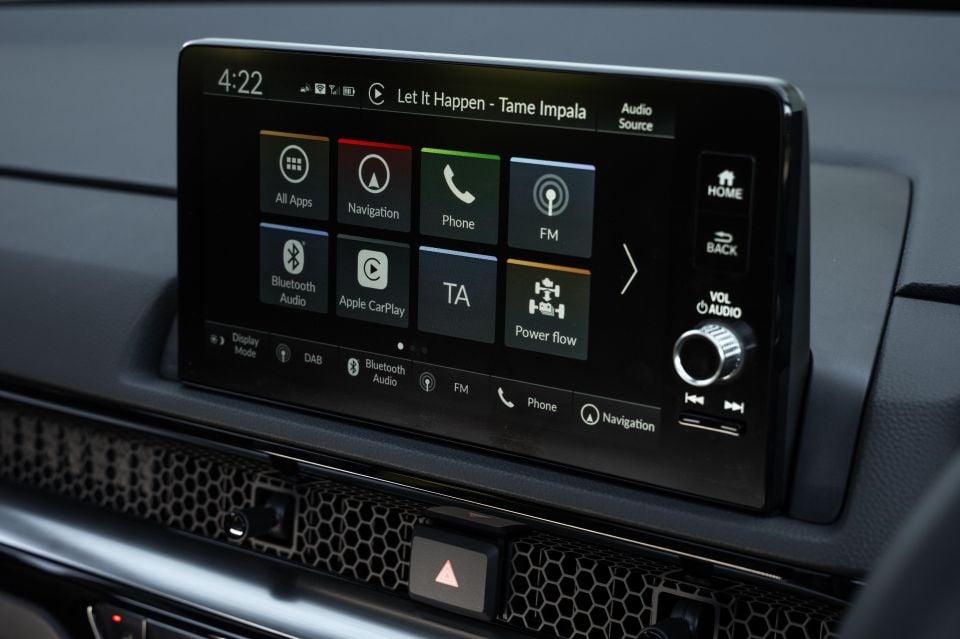
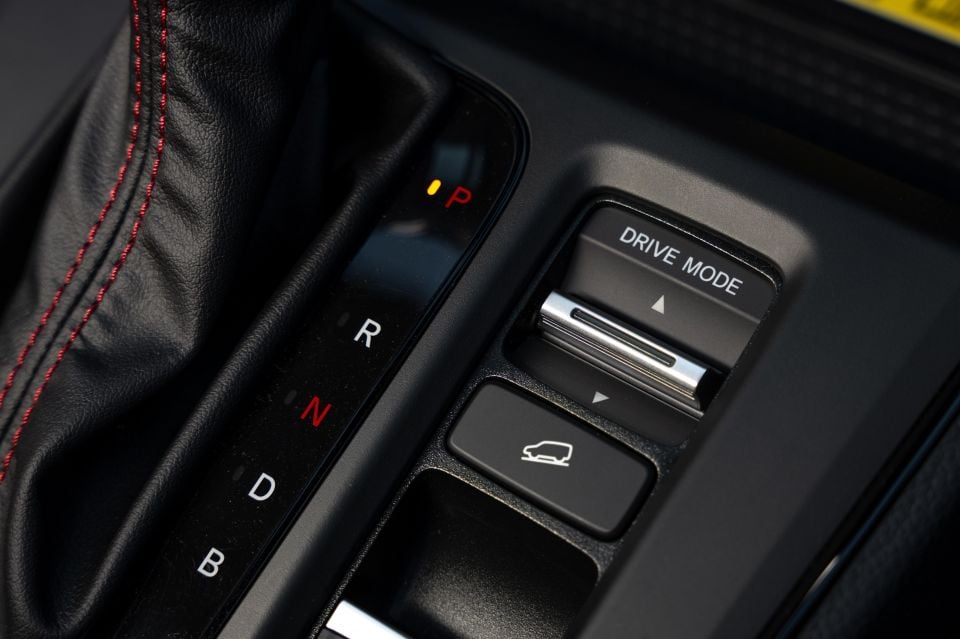
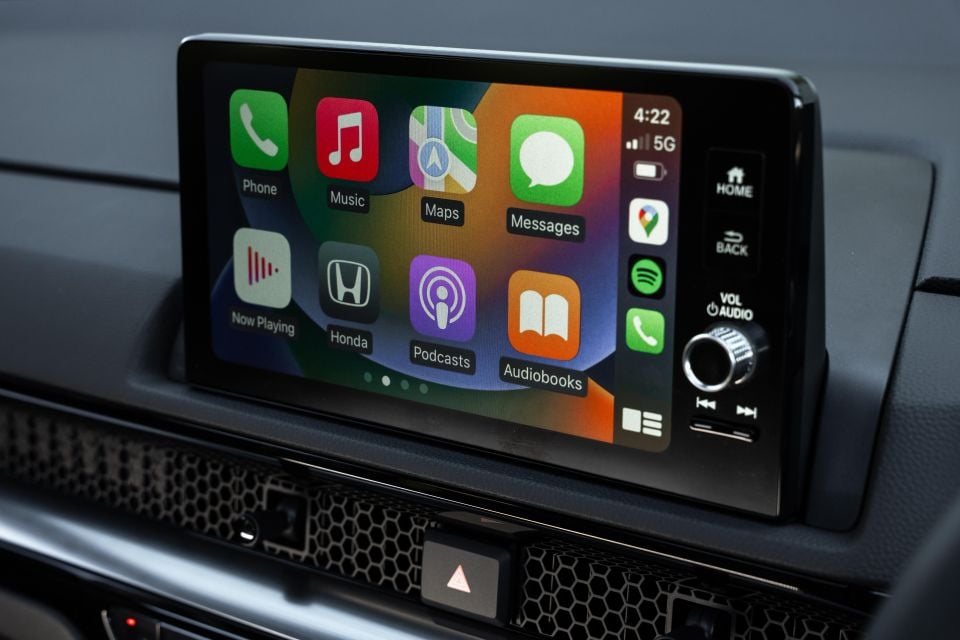
While even in the sportier-leaning e:HEV RS the seats aren’t heavily contoured like we’ve seen in other SUVs, the CR-V’s front pews offer support from all angles. I only sat in leather-trimmed models – the black-only colour theme across the range is a little boring… though the RS gets red stitching.
Ergonomics are very sound, with key spots like climate controls and volume getting knurled rotary dials, and other functions getting similarly tactile switchgear. These elements could have been lifted straight out of an Audi.
There are different trim inserts depending on variant. The VTi LX gets a fairly convincing open-pore wood-look, while the e:HEV RS features a brushed aluminium-effect insert. We didn’t sit in the VTi X, but the VTi L has a golf ball-like dimpled plastic trim.
The 9.0-inch touchscreen infotainment system is a welcome step forward (or two) over the previous generation, and like other models in the line-up offers clean graphics, solid responses and a good level of functionality including wireless Apple CarPlay.
Note that satellite navigation is absent from the base VTi X and X7, but otherwise the full suite of features like Honda Connect and DAB radio are standard across the range.
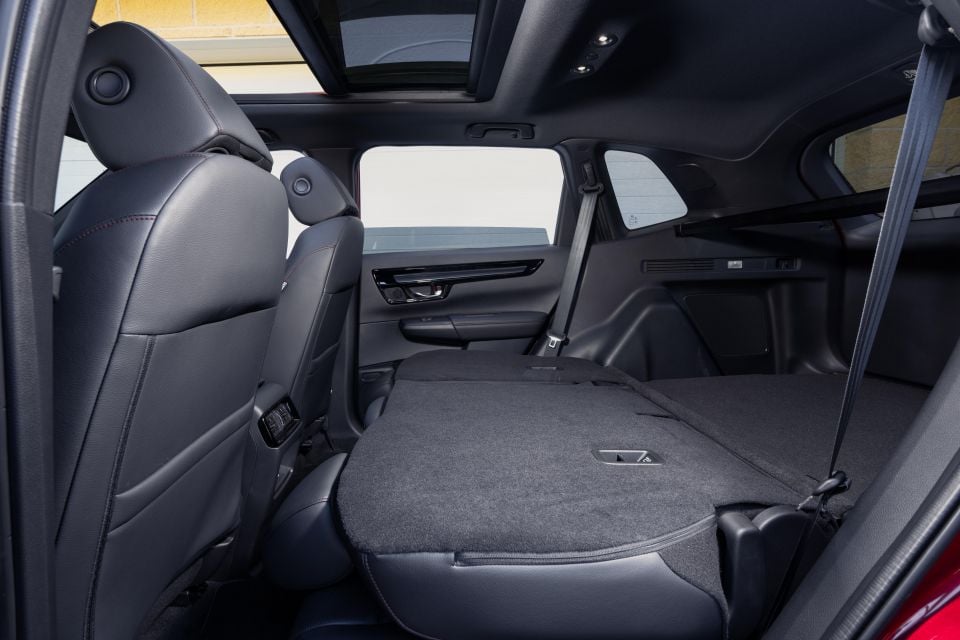
Being one of the larger entrants in the mid-size SUV segment, the CR-V’s second and third rows are highlights.
We didn’t get to trial a three-row CR-V at launch, but the second row – accessed by rear doors that open at up to 90 degrees – is up there with the likes of the Outlander and X-Trail.
In addition to the wide-opening rear doors, the second-row seats slide fore and aft, and offer eight stages of reclining. There’s ISOFIX anchors on the outboard seats, and top-tether points for all three. One knock is the ceiling mounted centre seatbelt, which is a bit old-hat.
Rear passenger accommodation is above average for the class, particularly leg- and knee room. Headroom has been improved thanks to the scalloped roof behind the panoramic sunroof in applicable grades, but is still a bit on the tighter side compared to rivals.
You also get rear air vents, map pockets, a fold-down centre armrest with cupholders, and bottle holders in the doors, as well as USB-C ports at the rear of the centre console. If you opt for the seven-seat models you also get three zones of climate control with roof-mounted vents.
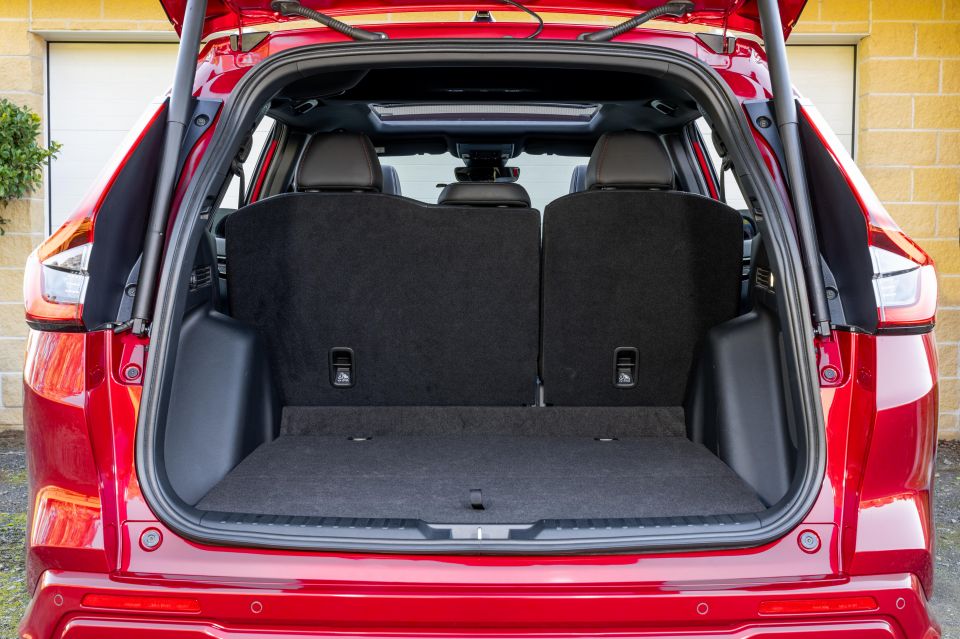

Following the launch CarExpert took a loan of a CR-V VTi L7. A quick sit in the back seat reveals a great one-touch mechanism to get the second row seats out of the way, though the third row is best left for kids.
Boot space is 581-589L (VDA) with five seats in use, and 1457-1671L (VDA) measured to the roof depending on variant. Seven-seat models quote 150L behind the third row of seating.
Five-seat VTi variants get a full-size spare wheel, seven-seat models get a space-saver spare, and the e:HEV RS gets a tyre repair kit due to the placement of the high-voltage hybrid battery under the boot floor.
The 2024 Honda CR-V offers two powertrains in Australia.
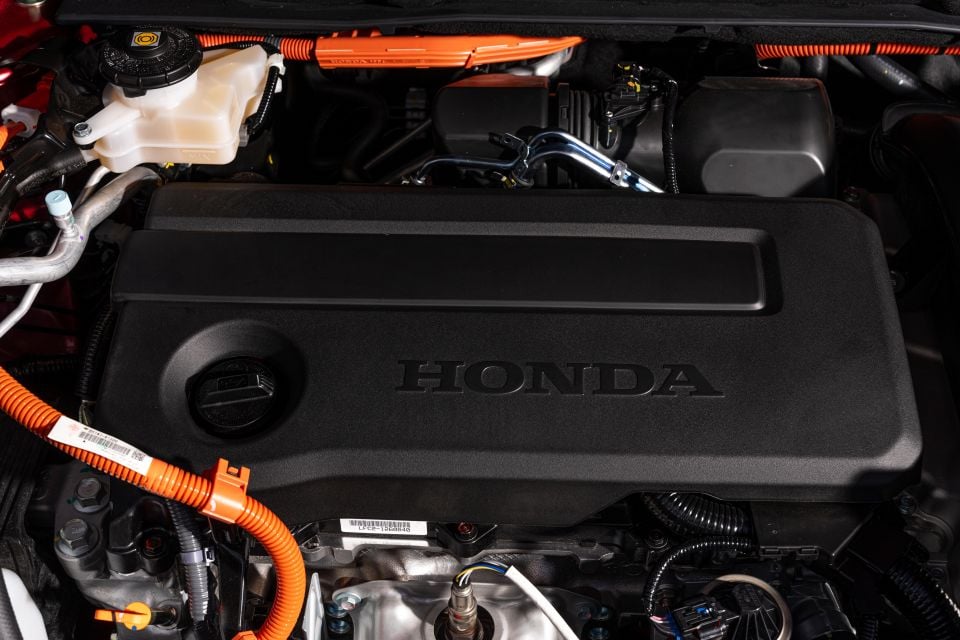
CR-V VTi models use a 1.5-litre turbocharged four-cylinder petrol engine shared with the smaller ZR-V and Civic.
In the CR-V, the four-cylinder turbocharged engine generates 140kW (6000rpm) and 240Nm (1700-5000rpm). Drive is sent to the front wheels via a continuously-variable transmission (CVT), with on-demand all-wheel drive (AWD) available for the VTi L and VTi LX.
Fuel consumption ranges from a claimed 7.1L/100km in five-seat 2WD grades to 7.7L/100km for the decked-out VTi LX AWD. Claimed CO2 emissions range from 162-169g/km for the petrol line-up.
The e:HEV RS features a 2.0-litre petrol-electric hybrid system comprising a four-cylinder naturally-aspirated petrol engine teamed with two electric motors. System outputs are rated at 135kW (5000-8000rpm) and 335Nm (0-2000rpm) – 20Nm more than the Civic e:HEV and ZR-V e:HEV.
Honda calls the e:HEV’s transmission an Electric Continuously Variable Transmission (E-CVT), which like the Civic e:HEV and ZR-V e:HEV is teamed with a power control unit that shuffles between power sources as required.
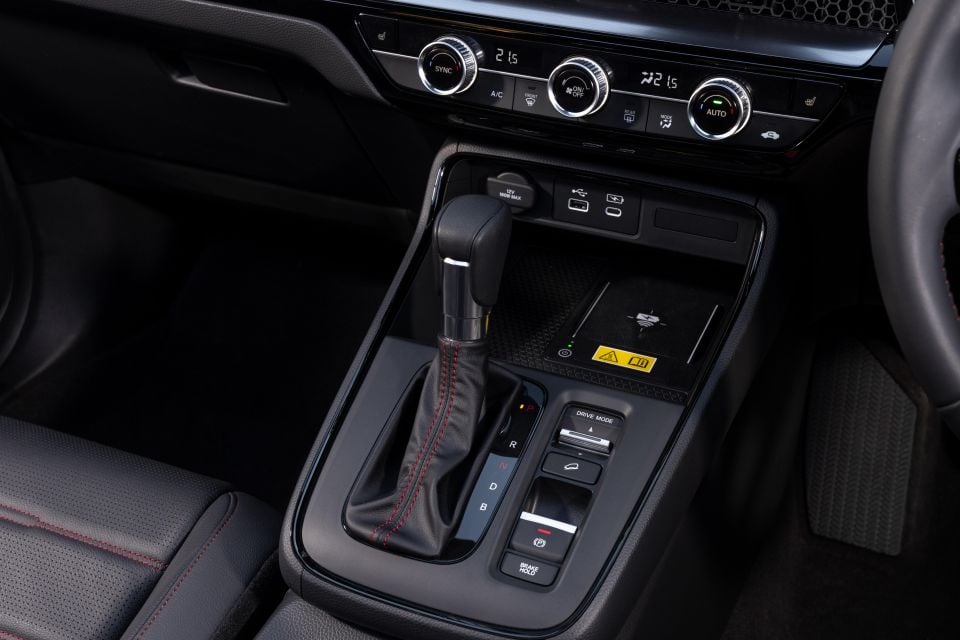
Opting for the e:HEV 2WD drops fuel consumption to a claimed 5.5L per 100km, which is about 0.8L off the claim of the Toyota RAV4 2WD Hybrid. CO2 emissions are rated at 125g/km.
All CR-V variants are homologated to Euro 6b emissions standards, and are rated to run on regular 91 RON unleaded. The fuel tank measures 57 litres across the range. Idle stop/start isn’t fitted to petrol models.
Kerb weight is between 1613kg-1771kg depending on variant; meanwhile braked towing capacity is up to 1500kg for petrol five-seat models, 1000kg for petrol seven-seat models, and 750kg for the e:HEV hybrid.
On the launch we cycled through the 2WD, AWD and e:HEV versions of the new CR-V.
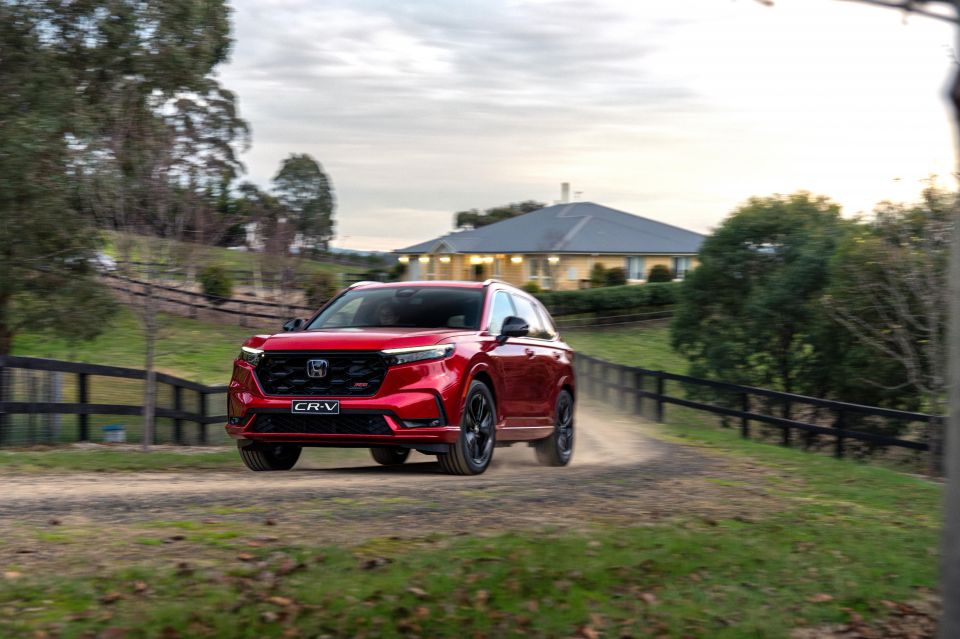
Where expert car reviews meet expert car buying – CarExpert gives you trusted advice, personalised service and real savings on your next new car.
My first leg was behind the wheel of the VTi LX AWD, which features the 1.5-litre turbo drivetrain and on-demand all-wheel drive. In typical Melbourne style, we had a mix of weather conditions throughout the day – for this particular leg, it was pouring rain.
The CR-V wasn’t fazed by the weather or the slippery surfaces. The VTi LX stayed wonderfully planted and secure across varying speed zones, road surfaces and traffic environments.
Performance from the 1.5-litre VTEC turbocharged petrol engine is good, with effortless torque down low that makes the CR-V feel more relaxed than naturally-aspirated rivals such as the Outlander or X-Trail.
I will say, however, that Honda’s CVT while good at keeping the engine on the boil in normal driving, it isn’t the most engaging transmission. In petrol models it’s slurry and droney as you apply more throttle, but sink the boot in and it’ll ‘shift’ through steps right at the top end.
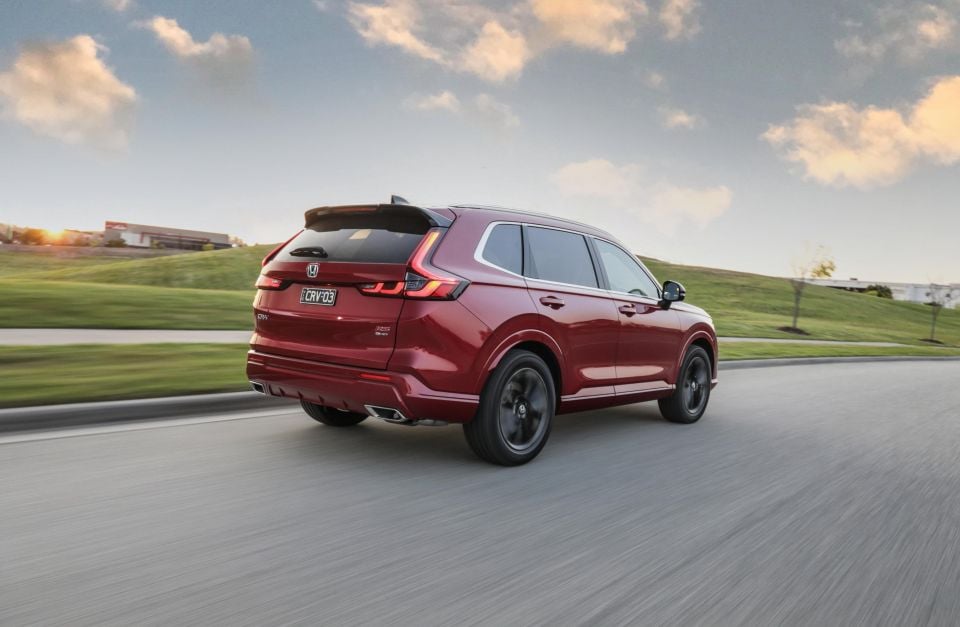
Cruising through the ‘burbs and on the highway though, it’s perfectly agreeable and gets the job done, and it feels like the new CR-V has been given some better insulation from engine, road and wind noise compared to the old one.
Even at 100km/h in heavy rain on the Freeway the CR-V VTi LX was beautifully composed and stable, with the tight steering giving confidence that the front wheels are staying on the straight and narrow.
Speaking of the steering feel, Honda has dialled in the sort of linearity and feedback we really enjoyed in the Civic hatchback, with a sporty feeling that ties it nicely to the smaller Civic.
That became even more apparent once I hopped into the e:HEV RS and turned off the freeway and onto the winding B-roads through the Mornington Peninsula towards Red Hill.
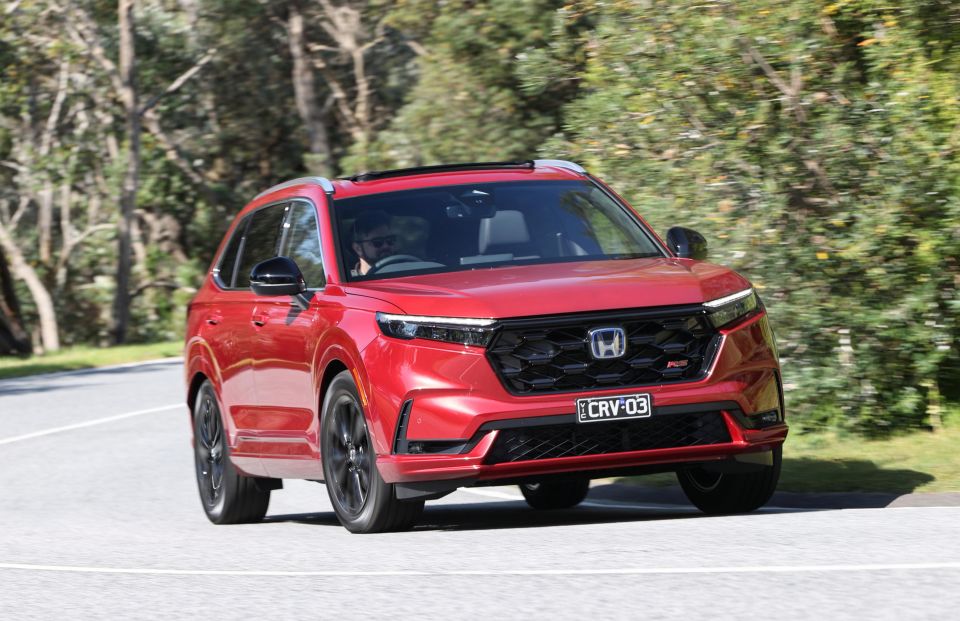
Now normally hybrids are made for optimal efficiency at the expense of engagement and enjoyment, particularly ones based on SUVs, but the CR-V e:HEV has the same dash of spice that I remember from the excellent Civic e:HEV.
Don’t let the 135kW power claim fool you into thinking this would be easily outgunned by the 168kW RAV4 Hybrid, because it feels more responsive and athletic than its Japanese rival, particularly in its model-specific Sport mode.
Set up in Sport, the CR-V has a cool augmented engine sound and CVT shift pattern that feels and sounds quite convincing as a more sporting drivetrain, and ties in well with the capable chassis tune.
You can genuinely chuck it around and have a bit of fun – keep in mind the e:HEV is only 2WD – and in drying conditions the CR-V offered plenty of grip and composure, and brought a bit of a smile to my face.
In its standard drive mode there’s still a fair chunk of this character mixed in, with responsive steering and keen dynamics making for a very mature and engaging drive all round.
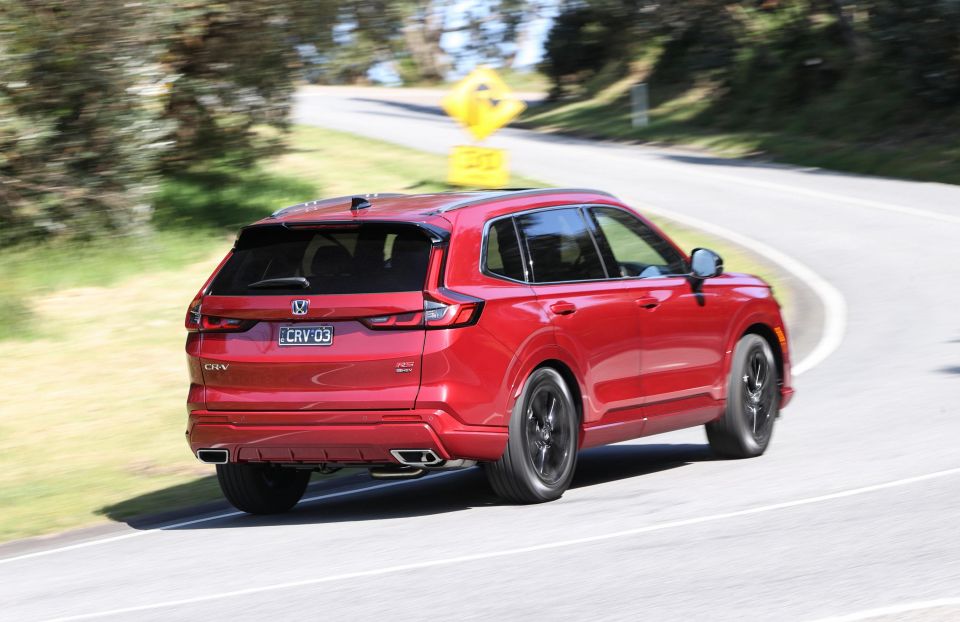
This kind of vehicle isn’t usually being purchased as a driver’s car, but it’s still nice to see that Honda is making sure mums and dads aren’t missing out on fun behind the wheel in day-to-day driving.
Also worth noting is the Honda Sensing suite of assistance systems, which has taken a noticeable step forward since the previous iteration. The adaptive cruise, lane centring and Traffic Jam Assist functions work much better than the last model, and offer a level of refinement and user-friendliness akin to European makes.
Honda has also done away with the LaneWatch blind-spot camera, and fitted actual blind-spot monitoring and rear cross-traffic alert systems which work much better – it’s interesting, because the Thai CR-V gets LaneWatch unlike Australian models which come out of the same factory.
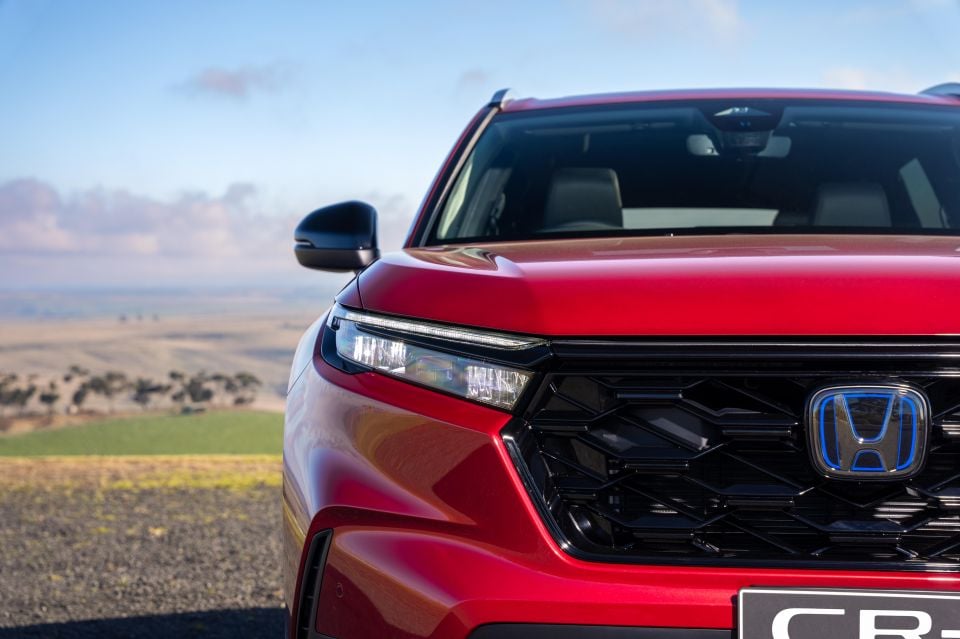



CR-V VTi X highlights:
CR-V VTi X7 adds:
CR-V VTi L adds (over VTi X):
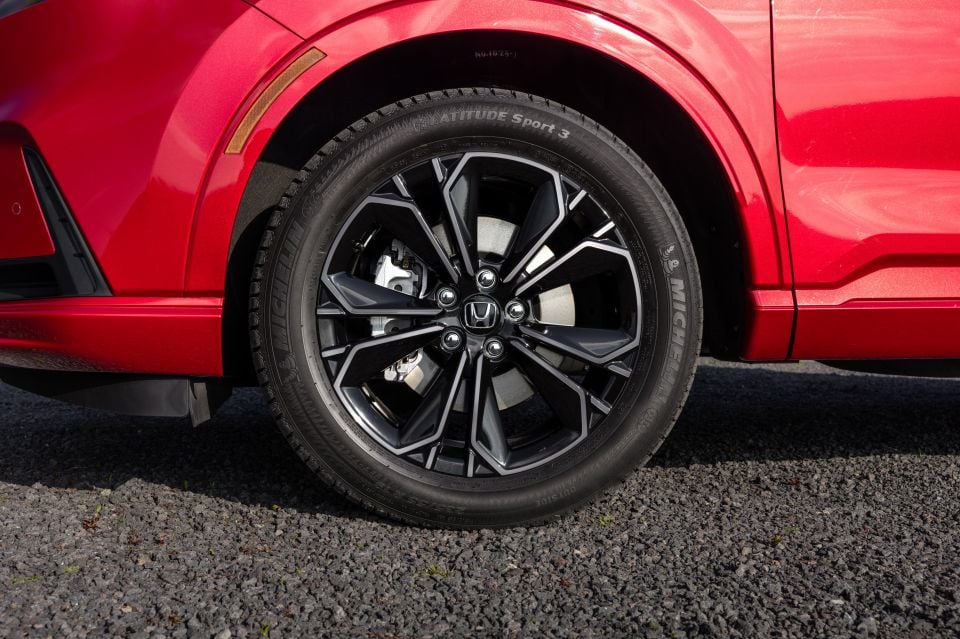

CR-V VTi L7 adds (over VTi X7):
CR-V VTi LX adds (over VTi L):
CR-V e:HEV RS adds:

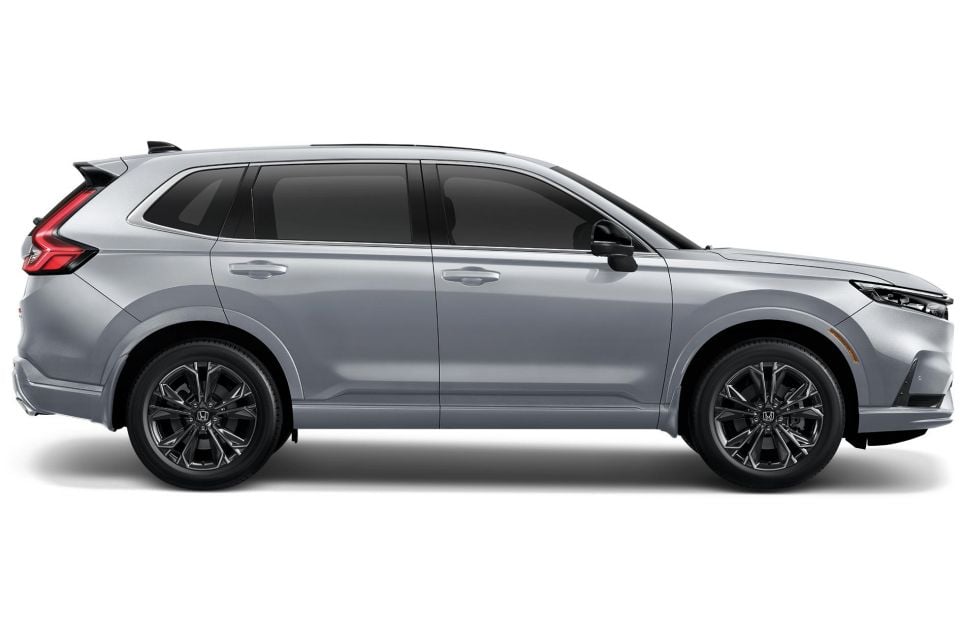
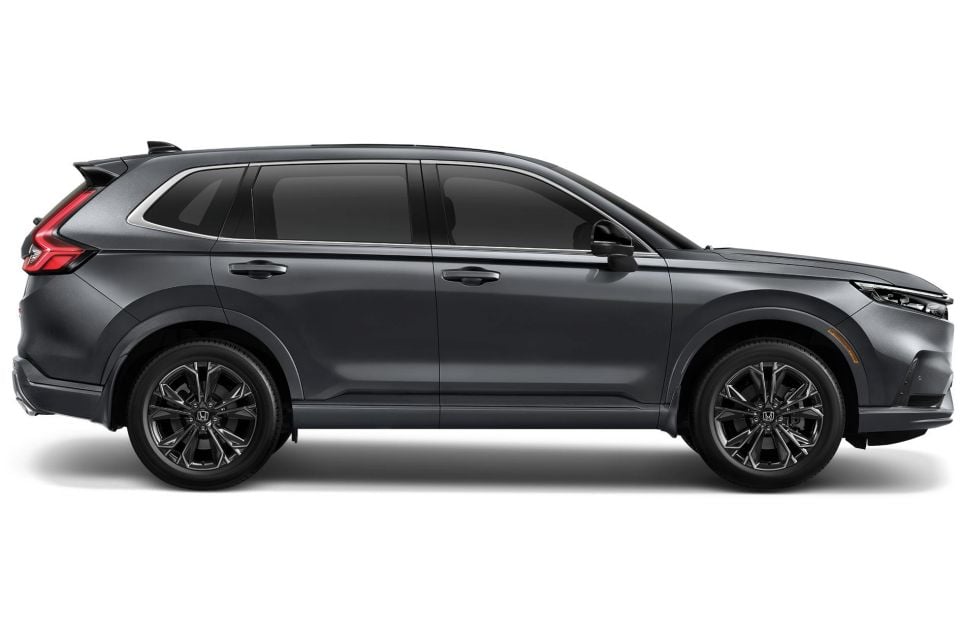
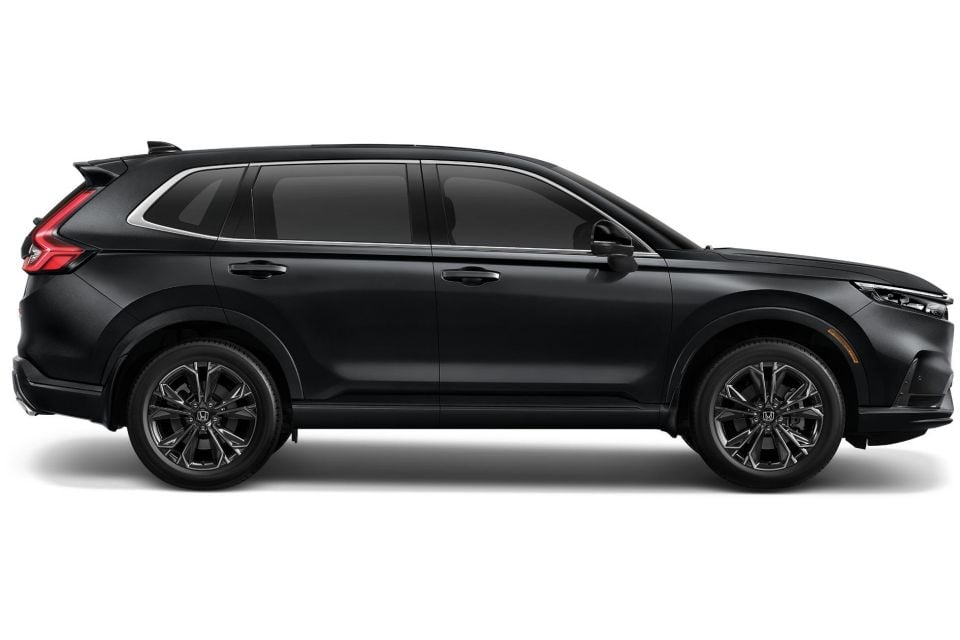
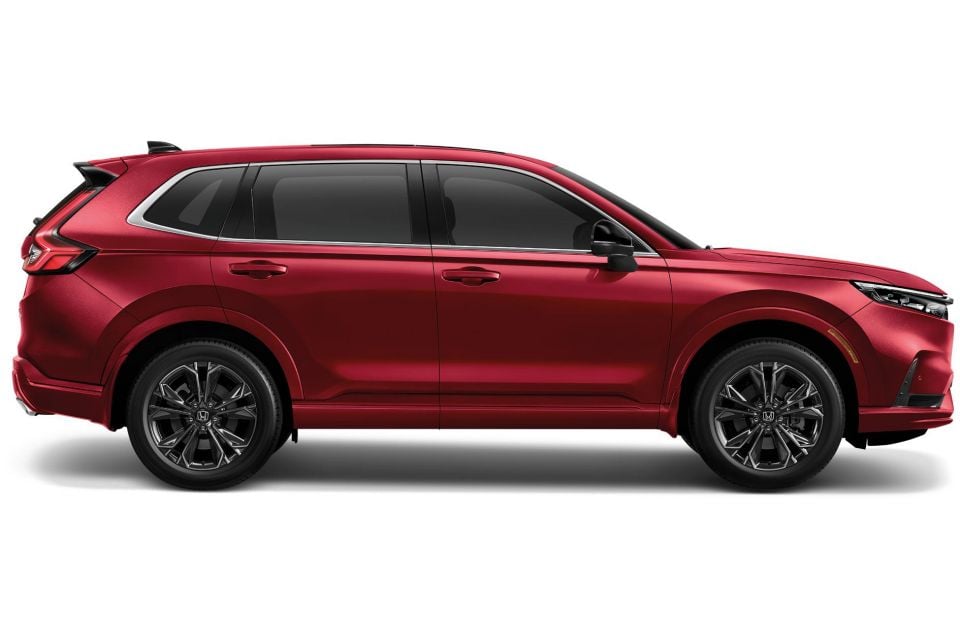
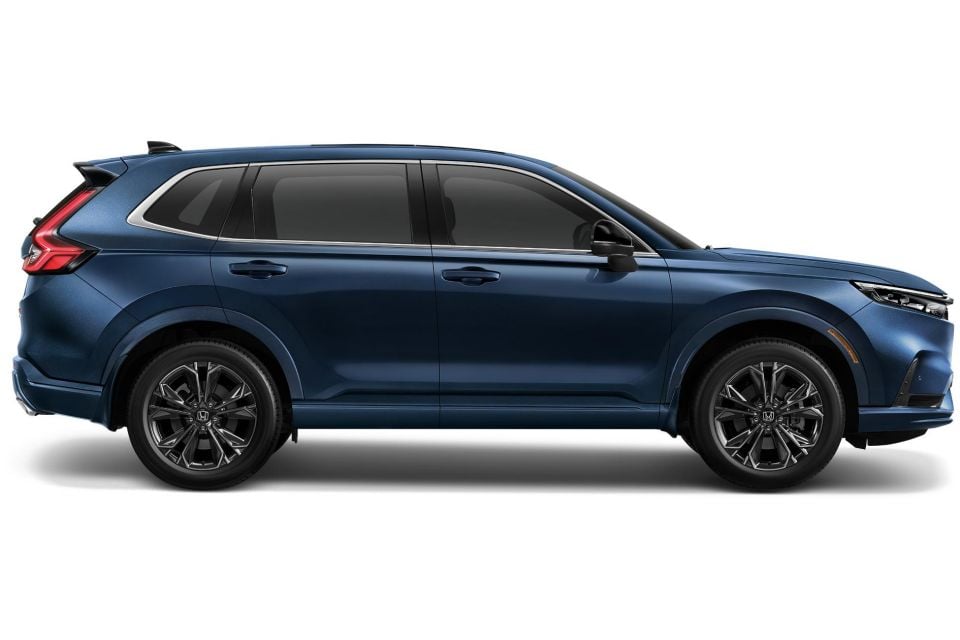
The new Honda CR-V is yet to be tested by ANCAP or Euro NCAP – and therefore is currently unrated.
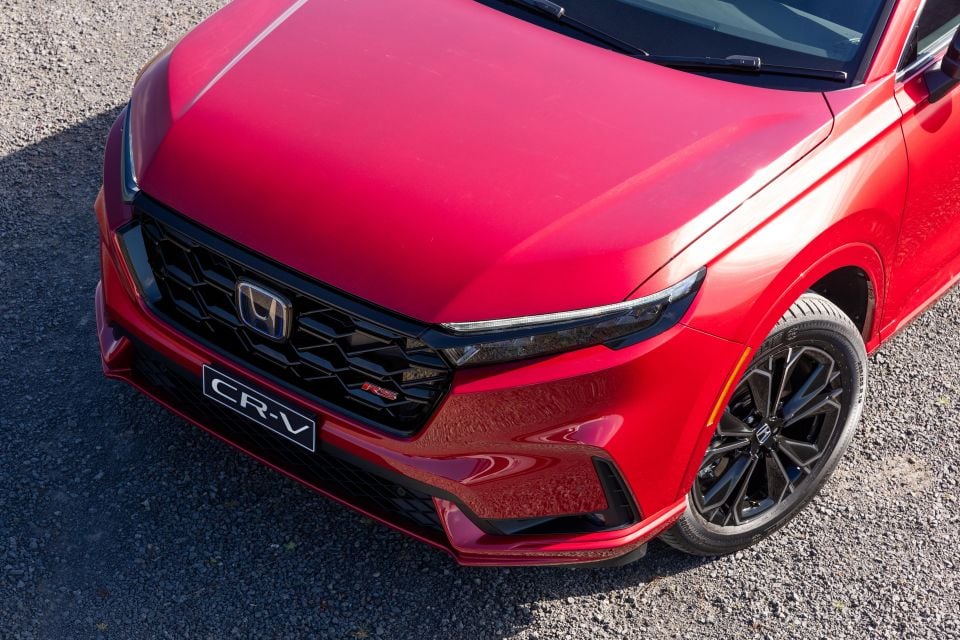
Standard safety features include:
CR-V VTi X7 + VTi L add:
CR-V e:HEV RS adds:
Honda Australia covers its range with a five-year, unlimited-kilometre warranty.
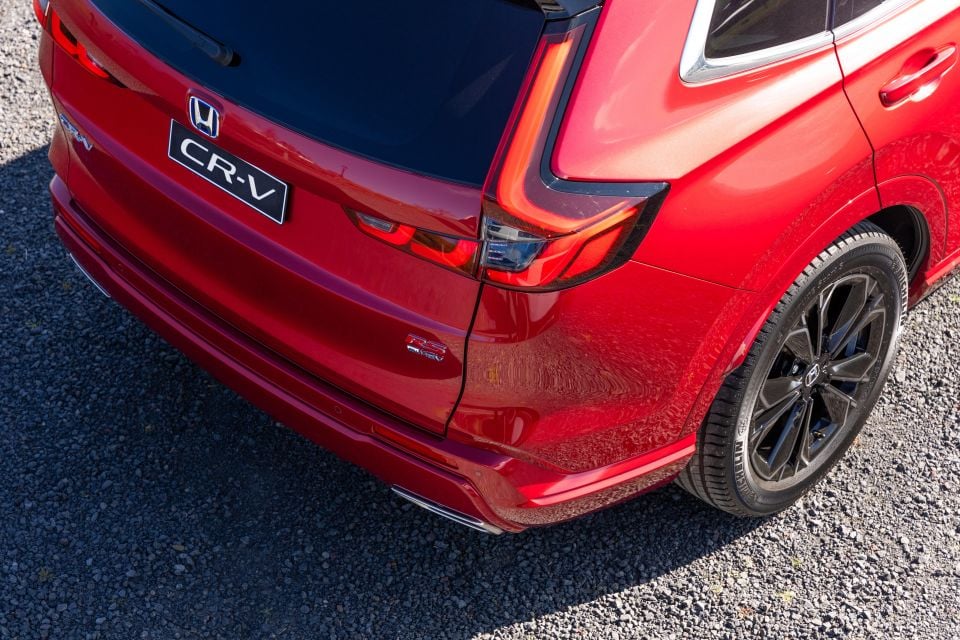
Honda provides an additional six-year rust protection warranty, and an eight-year high-voltage battery warranty for the e:HEV. There’s also premium roadside assist for the same period, as well as five years of capped-price servicing. Further, it will provide complimentary satellite navigation map updates for five years.
Honda is currently capping scheduled maintenance at $199 per visit for the first five scheduled services for new models. Intervals are 12 months or 10,000 kilometres – whichever comes first. The mileage interval is shorter than most rival brands, with 15,000km being the general standard.
Our launch drive wasn’t quite indicative of most daily driving conditions, but we saw high 7.0s to low 8.0s (L/100km) in the VTi L and VTi LX with mainly highway driving, and high 5.0s to low 6.0s for the e:HEV following a more spirited stint through the Peninsula’s B-roads.
I’ve been pretty critical of recent CR-V generations because I always felt they never came together the way the first two generations did – I’d know, because we had one in the family for well over a decade.

My parents bought a first-generation Honda CR-V new back in 2000 and it eventually became my first car. For 15 years this thing was bulletproof; it survived primary and secondary school runs for three kids, drove to Queensland and back multiple times, weekly tennis games, shopping centres, and just about anything else you could throw at it.
By the time my parents sold it in 2015, we had collectively put nearly 190,000 kilometres under the tyres. As recently as a year or two ago we’ve seen our very car driving around our local area, same plates and all.
Honda has done an excellent job giving the CR-V back its mojo. The latest iteration of the brand’s popular crossover is almost a two-generation jump over its predecessor in terms of refinement, technology and packaging – just don’t expect the three-row models to be a good replacement for your Odyssey if you need the seats.
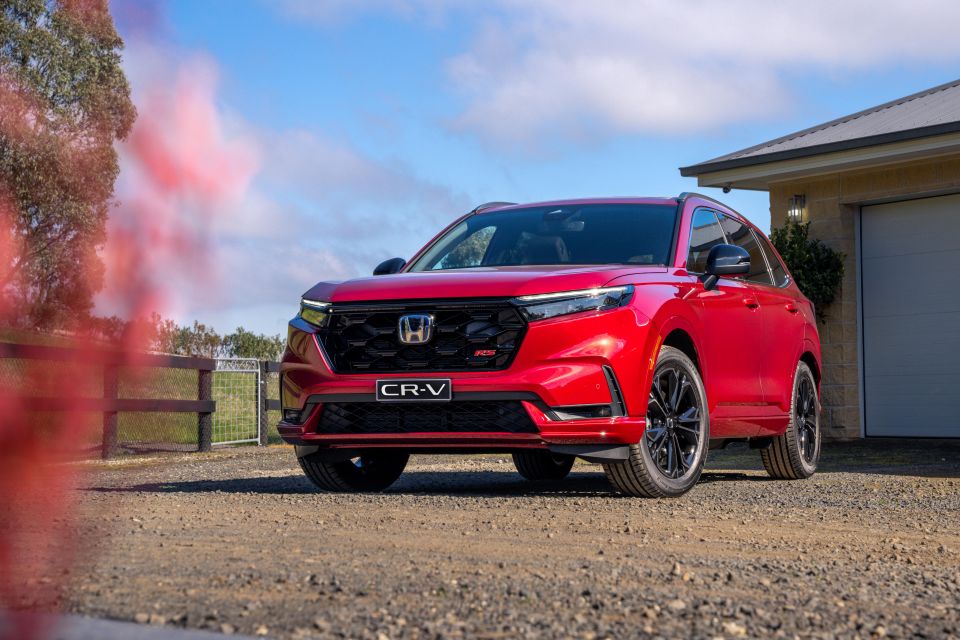
The key ingredients that have made this nameplate so popular over the years are still here, with an added dash of class and polish that hark back to Honda’s old ‘Japanese Euro’ reputation.
It easily beats the Outlander, RAV4 and X-Trail for behind the wheel feel, has more space inside than a CX-5, while also offering a solid level of standard equipment across the range with sharp drive-away pricing.
The new hybrid option is the standout of the range, though it’s a shame you need to spend $60,000 to get into one. Honda has flagged its intentions to expand its choice of hybrids (meaning more affordable options), but it could be some time still until we see them released Down Under.
In the meantime, the VTi X7 and VTi L petrols shape as the best value in the range relative to the competition, while those sick of waiting for a RAV4 Hybrid or X-Trail e-Power might find the CR-V e:HEV a very compelling and engaging electrified alternative.
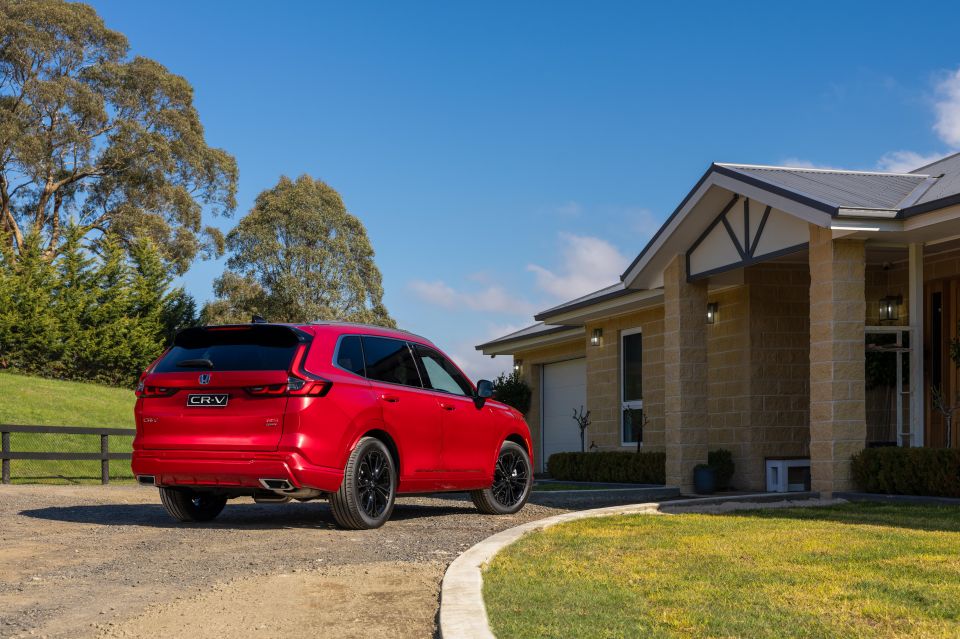
Click the images for the full gallery
BUY: Honda CR-V MORE: Everything Honda CR-V
Where expert car reviews meet expert car buying – CarExpert gives you trusted advice, personalised service and real savings on your next new car.
James Wong is an automotive journalist and former PR consultant, recognised among Australia’s most prolific motoring writers.


Matt Campbell
6 Hours Ago


Josh Nevett
3 Days Ago


Josh Nevett
5 Days Ago
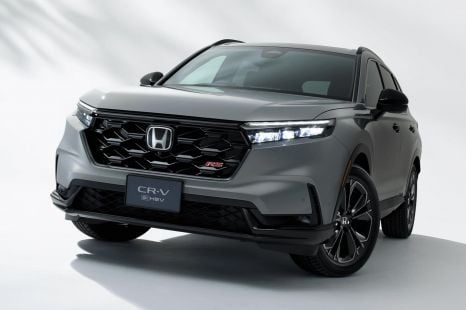

James Wong
7 Days Ago


Derek Fung
7 Days Ago


CarExpert.com.au
10 Days Ago